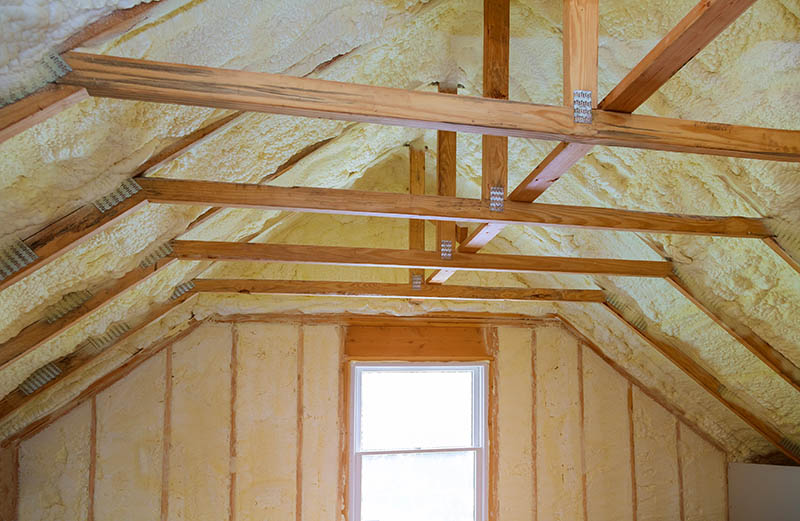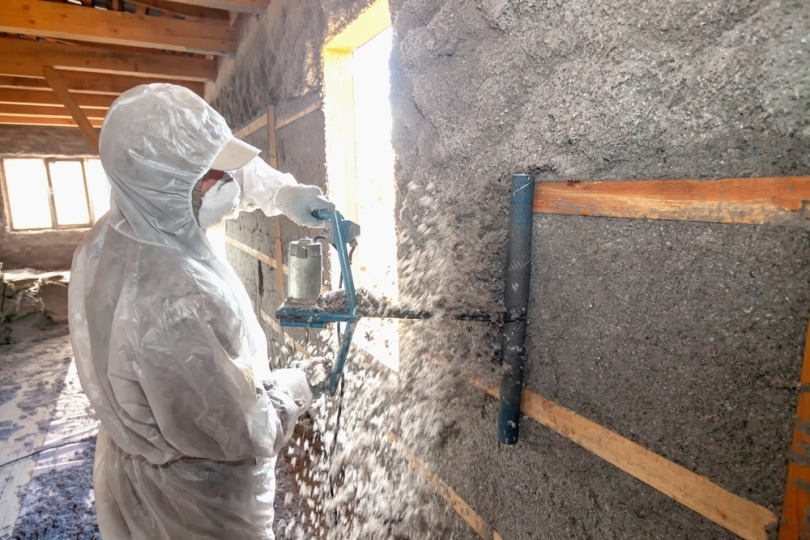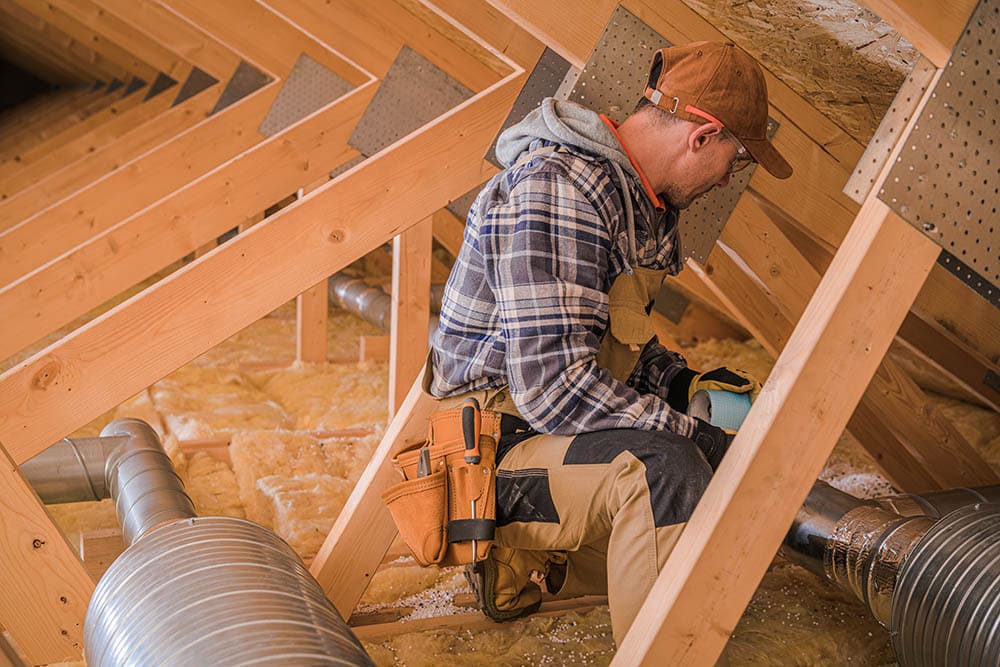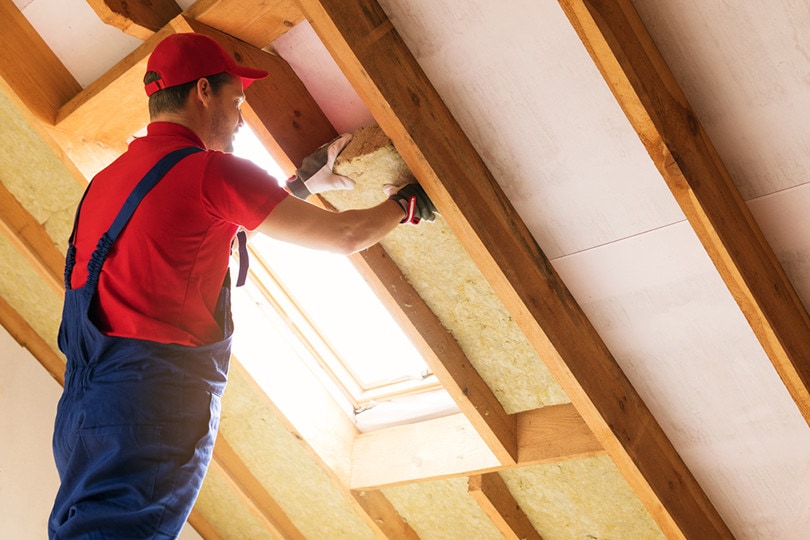How Long Does Insulation Last in An Attic? Types, Tips, & FAQ
-

- Last updated:

Assuming the conditions are right, a perfectly installed insulation should serve you for 80 years or more. But bear in mind, we’re only speculating. There are always several factors at play that could limit its functionalities.
How often should your attic insulation be replaced? Every 15 years, give or take. Once it hits that 15-year mark, you’ll start seeing signs of degradation, due to animal interference, moisture, or heat. Before we talk about all that, let’s first look at the type of insulations on offer.

What Are the Types of Insulation Available on The Market?
While shopping for attic insulation, it’s important to remember that different insulations have different lifespans. But don’t use “lifespan” as the only decision-making metric. Draft a pros and cons list to act as your guide, and ultimately help you figure out what’s best for your home.
Just so you know, the average lifespan of your preferred attic insulation will be the chief determinant of its replacement timeline. So, if the insulation has a shorter lifespan, the replacement dates could be pushed forward.
1. Polyurethane Foam (Spray Foam)

Polyurethane foam insulation is not only reliable but also very durable. It can actually last a lifetime—if nothing or no one interferes with it. In addition, it has a higher degree of resistance to mold and doesn’t seem to be affected by moisture.
It’s so effective at what it does that you end up forgetting that you were supposed to check your insulation status after a certain duration.
Does it move around after installation? No, it doesn’t, unless you decide to cut it away. But if a critter somehow gains access to your attic and manages to compromise its integrity even to a smaller degree, it significantly loses its efficiency. That’s to say, you’ll have to replace the whole thing on your own or find a professional who’s good at fixing what’s broken.
2. Fiberglass Insulation
Even though spray foam is the most durable insulation on the market, the fiberglass option is still the most popular among homeowners. And we don’t think its demand will drop any time soon, given buyers are always drawn to its price tag. Well, that and the fact that it’s so easy to install.
If you decide to go for fiberglass, you’ll either get it as batt or blown-in insulation. Some property owners prefer the batt insulation because it often comes in rolls and can be faced or unfaced.
“Faced” means there’s always some material acting as a barrier that’s tasked with controlling the effects of moisture or vapor affecting the building’s interior fabric. That material can either be vinyl, aluminum foil, or kraft paper. To hold this material in place, you’ll have to staple it.
Contrary to the faced insulation, the unfaced insulation has no vapor barrier. So, friction will hold it into place, or some sort of exerted pressure. If you had to choose between the two iterations, we say go with the faced insulation. The facings are vital components, as they usually hold the insulation together and protect the surface.
The main disadvantage of the faced fiberglass insulation is its susceptibility to moisture and mold. If you don’t maintain its light weight or fluffiness, the insulation’s thermal resistance (R-Value) drastically drops. Therefore, before you start working on the installation, make sure there are no leaks in the roof. Otherwise, you’ll have to replace it despite the age.
Our bets are always on the blown-in insulation, as they are more energy-efficient and effective at preventing heat loss. The only drawback with this option is that you can’t use them in crawl spaces.
3. Cellulose Insulation

This insulation usually plays a more supplementary role and not the main one. So, you can’t install cellulose insulation in a home, and not install any other type of insulation. You either have to pair it with fiberglass insulation, mineral wool, or spray foam.
The fact that it’s made from recycled materials means it’s safe for the environment and the best option for homeowners who subscribe to the green movement of saving the planet. Sadly though, it doesn’t do well in the presence of moisture or mold growth. And, after 15 years, it naturally starts to degrade.
4. Mineral Wool Insulation
Mineral wool has a lifespan of 30 to 80 years. The total number of years is mostly influenced by the base material applied during production. So, the question that you should be asking the vendor is, “Did they use slag wool, glass wool, or rock wool as the base material?”
Rockwool is the most durable material, as it offers the highest degree of resistance to mildew, mold, and fire. But it’s not biodegradable or cost-effective.
Other than the fact that it’s pricey, property owners who love working on DIY projects tend to avoid this type of insulation, due to its complex installation process. You’ll need some sort of training (or experience) to install it properly.

How Do You Make an Insulation Last Longer?
Good maintenance is the secret to ensuring your insulation serves you for years. You’ll note that most of the issues that affect its operations are largely preventable and can be detected before they turn into something serious. The following are some of the things that you should be looking out for, at least once a year:
Vapor/ Moisture
“High degree of resistance” does not mean that it’s impervious to the effects of moisture. Like it or not, your insulation will always be at risk of degradation whenever moisture is present. In fact, that’s why we are often advised to check our roof for leakages at least twice a year to ensure its structural integrity isn’t compromised.
The obvious signs of humidity in a home include the presence of mildew, molds, and foggy windows. All those things are your cue to reach out to a cooling, heating, and ventilation expert, who’s experienced enough to fix the problem. They’ll tell you if the issue is with the ventilation or insulation.
Grime
There’s no reason why your insulation should have grime on it unless there’s an air leak that you haven’t noticed. And grime doesn’t just build up in a week or two. That leak must have been blowing in dust for several months, if not years. Before replacing the insulation, check all your walls and ducts for leaks. If not, you’ll find yourself dealing with the same problem in a month or two.

Gravity
Insulations don’t usually sag because someone was trying to pull them off your crawl space walls or attic. They sag due to gravity, and the process is very gradual. You won’t notice any change after a couple of years, but after a decade or so, you’ll see some difference. If it happens sooner than expected, whoever worked on them didn’t secure or install them properly.
Sagging isn’t a good sign, as it affirms the presence of air gaps, which in turn facilitate the growth of molds. So, you’ll have to staple it back, but only if it’s still in good condition.
Insects & Animals
If there’s an animal that has permanently taken residence in your home, and it’s planning to start a family, the nesting site will be at the insulation. The same applies to all insects, including roaches, termites, and fleas.
Now, we are all about repopulating the world, but not at the expense of newly installed insulation! They’ll tear and trample it, thus allowing moisture, debris, dirt, dust, and air to fill up that space.
Them affecting the insulation’s effectiveness won’t be the only thing you’ll have to worry about, at that point. You’ll also find yourself dealing with bacteria and parasites taking root in your attic, as they can compromise your health together with that of your family.
What Are the Signs That Your Insulation Needs to Be Fixed or Replaced?
- Frequent temperature changes in the house
- Drafty environment
- Roof leakages
- Exorbitant energy bills
- Mold growth
- Rodents running around the compound and in the house
- Constantly grappling with allergies


FAQ
What is an R-Value?
The R-Value is the main metric used to distinguish effective insulation from ineffective ones. It’s the first thing that you ought to take into consideration while shopping for new insulation. In layman’s language, the R-Value is your insulation’s capacity to resist heat flow.
You want to go for a material that has a higher value because that translates to a greater insulating power. In more economic terms, you get value for money.
Is It Wrong to Install a New Insulation Over the Existing One?
To be honest, it all depends on the situation. If we’re talking about the effects of mold or moisture, you’ll have to uninstall the old insulation before installing a new one. The costs will definitely go up due to the additional work involved, but we promise you, it will all be worth it in the long run. Moldy insulation will have back steaks and spots, so watch out for those.
If the insulation was damaged by pests, you’re allowed to install a new one over the existing one.

Conclusion
Attic insulation can last a lifetime with good maintenance, but most of them usually start showing signs of degradation after 15 years. Pests, water vapor/moisture, heat, and negligence have all been listed by experts as the common causes of degradation, and the reason why property owners usually find themselves spending more money on repairs. So, if the goal is to avoid the concomitant costs of repair and replacements, take good care of your attic insulation.
- https://www.atticsystems.com/about-attic-systems/news-and-events/39318-when-does-attic-insulation-need-to-be-replaced.html
- https://www.windowsonwashington.net/blog-full/8-signs-your-insulation-needs-to-be-replaced-or-is-past-its-serviceable-life
- https://jmroofsiding.com/blog/2018/01/24/often-need-replace-insulation-attic/
- https://www.angi.com/articles/when-should-i-replace-my-insulation.htm
Featured Image Credit: ungvar, Shutterstock
Contents
